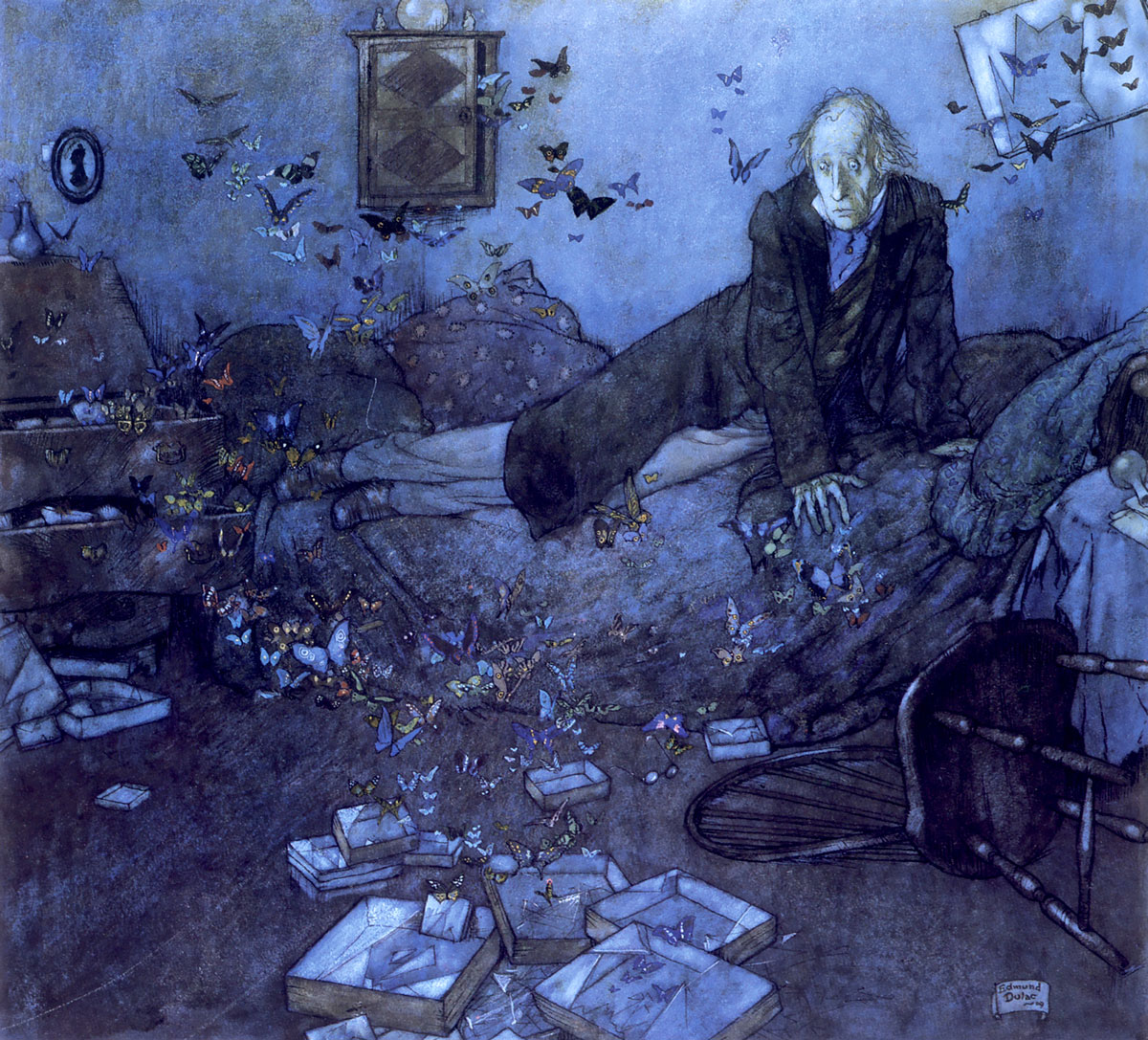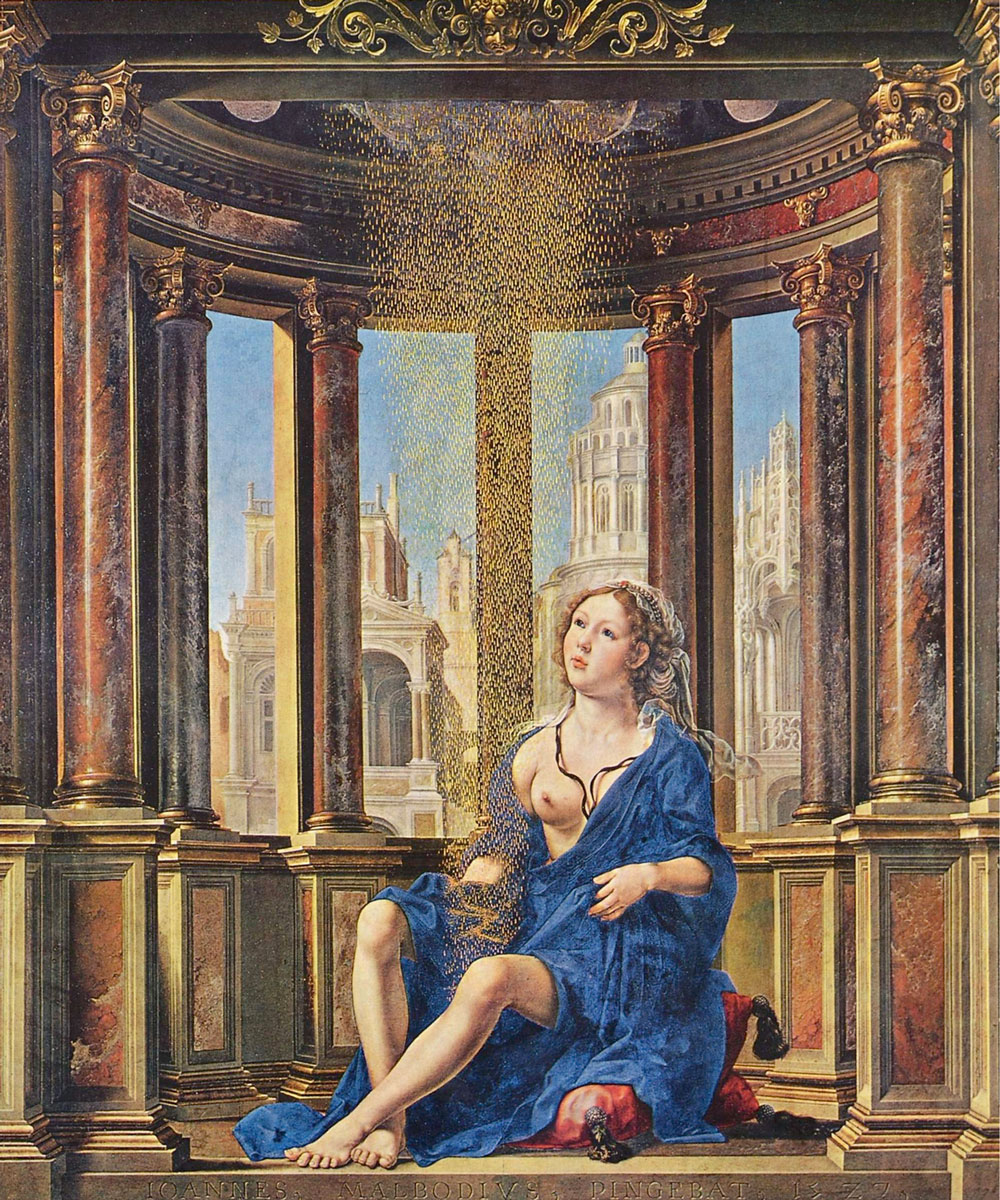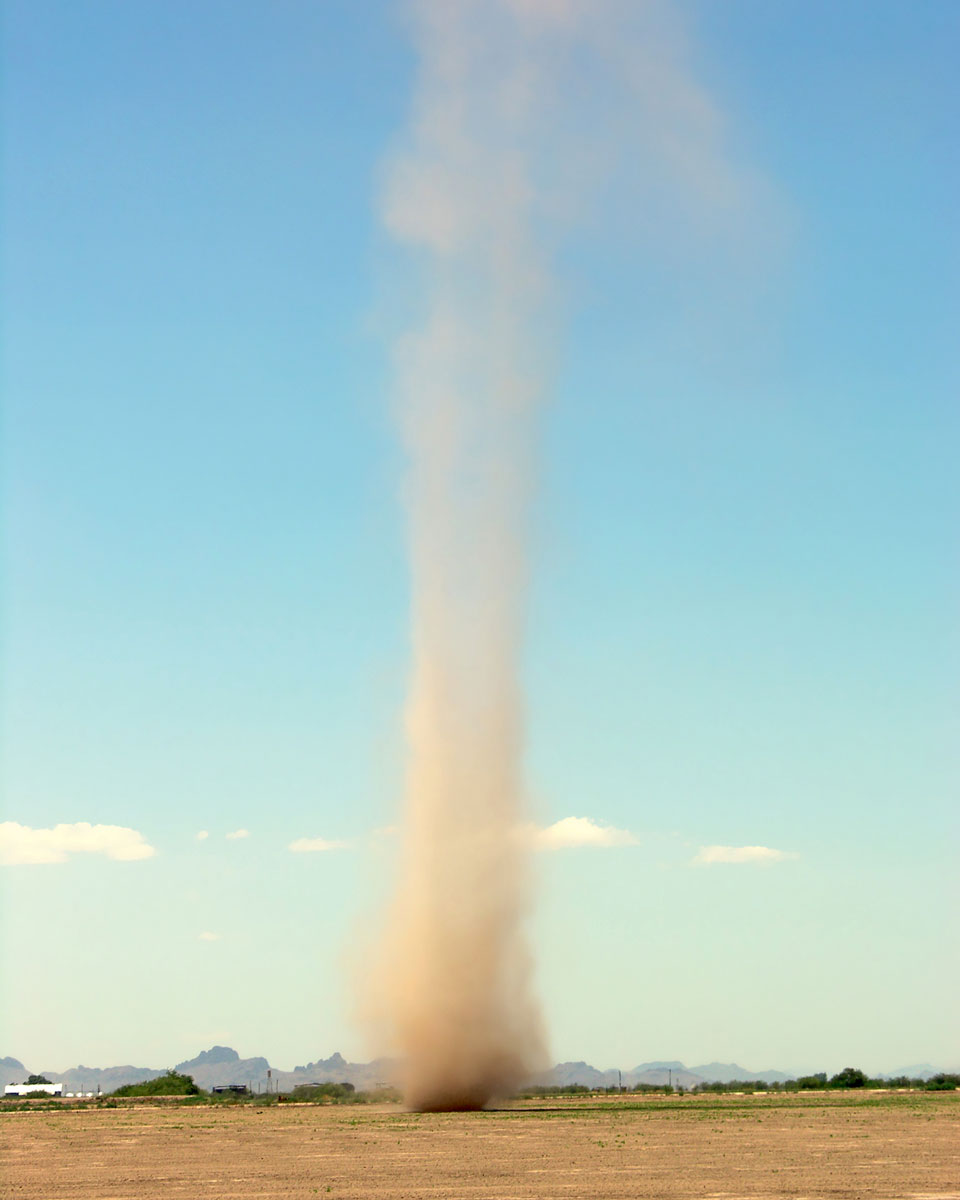Pulverulence
The power of powder
Steven Connor
Dust—a source of great contemporary fascination for artists, critics, and historians—is a powerful quasi-object, a magic substance, something to conjure with. Like anything magical, dust is ultimately a figuring not just of the possibility of magic, but also of the operations of magical thinking itself.
Much of the magical power of dust seems to come from the fact that it is reversible. Dust is simultaneously dispersive and concentrating: “to dust” means to cover with dust, or to make dusty, as when a cook dusts with flour or icing sugar, but it can also mean to clear of dust, a sense in use as early as 1587, when George Gascoigne refers to a youth who “curried was and dusted slicke and trimme.”[1] This makes a quibble possible in the lament of Guidarius and Arviragus for Imogen in Shakespeare’s Cymbeline: “Golden lads and girls all must, / As chimney-sweepers, come to dust”—in which the dusting can be both the relapse into and the clearing away of dust.[2]
Dust is, of course, the unmistakable emblem of death, decay, and dissolution, but it is also, under certain circumstances, powerfully generative. (A widespread belief among the upholders of spontaneous generation was that ticks, mites, fleas, and flies—all dust-like creatures—sprang up where drops of sweat fell on to dust.) An incident in the Finnish epic poem Kalevala shows the extra surge of transformative power than can be produced by grinding things down to their finest and most undifferentiated form. The wizard Lemminkainen, finding his way blocked by a fire-breathing eagle, reaches into his pockets for some chicken feathers he has previously gathered:
Searches in his pouch of leather,
Quickly takes the magic feathers,
Feathers from the hazel-chickens,
Rubs them into finest powder,
Rubs them with his magic fingers
Whence a flight of birds arises,
Hazel-chickens from the feathers,
Large the bevy of the young birds.
Quick the wizard, Lemminkainen,
Drives them to the eagle’s fire-mouth,
Thus to satisfy his hunger.[3]
One would have thought that the feathers alone ought to have been enough for a competent wizard, but even wizards have to obey magical laws, and here in particular the law of the reversibility of extremes, according to which the possibility of a sudden change of form depends upon first grinding all recognizable form out of the magical residue.
Dust, in the form of pollen, for example, is also fertilizing. It may be that the idea of fairy dust derives from this association, via the close affinity (though it is quite recent, not going back very much earlier than the sixteenth century) between fairies and winged insects, especially bees, who are commonly laden with pollen, but more especially butterflies, the figure of the soul for the Greeks, for whom the word psyche meant soul as well as butterfly, which do not carry pollen, but whose talc-dusted wings may remind us of it.
Dust is amorphous, without form and almost void. But this very fact allows it to be thought of as metamorphic, with the same general capacity to assume any form as stem cells, the epithets of which—“pluripotent,” and “totipotent”—seem to apply equally well to dust. The folk-atomism underlying this form of material imagination follows a magical or homeopathic logic of more-in-less, where the maximally comminuted form of the powder, in which all form is apparently decomposed, concentrates an elementary power of animation.
Take a living Toad, dry him first at the Sun, then in a covered Pot well luted, bring him to ashes, pound him, and lay the powder on venomous bitings, or such accidents, and you shall see one Venome attracting the other; and the reason is, because by burning or calcination, the vertue of the Toad is opened, and rendred effectually powerful to attract its like Poyson.[5]

The most extraordinary episode in the material imagination of particulates is the case of the “powder of sympathy,” whose effects were enthusiastically brought to notice by Sir Kenelm Digby. Digby, whose father had been executed for his alleged part in the Gunpowder Plot, revived the idea of a magical cure for wounds that had first been proposed by Paracelsus. But where Paracelsus had prescribed an ointment, having as its principal active ingredient moss from the skull of a man who had died violently, plumped out with boar’s and bear’s fat, burnt worms, dried boar’s brain, red sandal-wood, and mummy, Digby’s remedy was a powder consisting essentially of “green vitriol,” or ferrous sulfate. In a discourse before a learned assembly in Montpellier, Digby explained the process whereby the powder was applied, not to the wound, but to its efficient cause, or some associated property. He describes how he gave relief to the victim of a wound by dipping a bandage still impregnated with his blood into a basin in which the powder of sympathy had been dissolved. The magical logic seems to have been that the soothing and salutary effect on the bandage was conveyed by the powder to the wound. Just as dust and powder can transmit poison and contamination, so they can also convey care and cure.[6]
Digby’s concoction recalls and is given credibility by alchemical beliefs about the “powder of projection,” an alternative form of, or name for, the transmuting substance of the philosopher’s stone. The Scottish alchemist Alexander Seton is reputed to have had a blackish powder which he used to turn other substances into gold, and to have bequeathed the residue of his supply to his assistant Sendivogus (whose career, however, ended in disgrace when, having run out of the sovereign substance, and not knowing the secret of its manufacture, he was driven to the expedient of gilding coins).[7]
The dust formed of previously hard substances is often believed to retain the force or properties of the originals, particularly in the case of stones and jewels. Albertus Magnus reported that the stone Mephis, “being broken into powder, and droonke with water, maketh insensibilitie of torture.”[8] Its memory of hardness or sharpness means that dust can also be full of peril. In the case of diamond dust, the softness of the powder seems to preserve a memory of the hardness of its original, hence, perhaps, the many stories of its potency as a means of murder. There is a story that Paracelsus died of diamond dust poisoning, and Thomas Overbury was imprisoned in the Tower by the machinations of the Countess of Essex, who is said to have arranged for diamond dust to be added to his food.[9]
Dust may be thought of not just as primary matter, but also as a kind of anti-matter, the matrix or negative of form. Dust is in one sense evacuated of air, the gaps between the particles reduced to their minimum—hence its muffling, choking effects. At the same time, dust is characterized by a maximum of what might be called internal exposure, in which the ratio of the surface area of particles to their internal mass is extremely high. The availability of such a large surface area for chemical reactions accounts for the effectiveness of powders in forming solutions and suspensions. And, because they have no inside, because they are all a kind of internal exposure, dust-like substances can give contours or clarifying outlines to other things. Thus, dust, itself formless and edgeless, can both dissolve form and disclose it, like the snow that, in the right amount, can give to things a magical new clarity of outline, but passing beyond that point erases every landmark beneath its featureless drifts and dunes.
Dust is attracted to other objects by static electricity, but is also itself a kind of strange attractor, which reveals forms in movements of eddy and turbulence. Dusting for fingerprints reveals the otherwise invisible traces of human presence and action. The prospector’s sluice riddles out the gold-dust from the silt in which it is suspended, and the Hoover uses filters to separate the dust from the air in which it is inmixed. But dust itself can also be a kind of riddle or filter, which simplifies and separates out forms through its selective attentions. The Italian artist Claudio Parmiggiani, whose work has been evocatively discussed by Georges Didi-Huberman, fills sealed rooms with smoke, allows the soot to settle in sheets and films, and then removes the fittings and furniture, leaving behind their sculpted outlines. We strive with dustpan and vacuum cleaner to separate ourselves from our dust, but here the dust is a way of separating objects from their silhouettes, just as the incandescent cinders turned the bodies of the Pompeians into their own inverted images or moulds. The soot effects a fall-out photography, a soft, spectral frottage, or finger-painting of the space.
The disclosive power of dust has connections with divinatory practices that employ apparently chaotic or quasichoate forms to lift the veil of time—reading the future in dispositions of sand, cinders, moles and freckles, tea leaves, and flocks of birds. Supernatural beings are also often picked out from backgrounds of swirl and drift, of temporarily massed and rippling multiplicities. Fairies and other elemental entities are thought to inhabit the next-to-nothing bodies of wind, blizzard, or storm. We might think of the vortical bodies of dust-devils, the Italian witches who were known as “knots of wind,” and the Irish Sidhe who are said to become visible in the gyrations of leaves. Divinity has the physiology of air and of the pulveriform or particulate matter that cousins it. Zeus appears to Danae in the form of a shower of gold; Dracula transports himself in the form of a mist, a power he shares with Satan; foam-formed Aphrodite’s name announces her as an emanation of spray and spindrift. And the sky is strewn with the pointillist body-abstracts of mythical gods, heroes, and heroines—Orion, Andromeda, Perseus.

The idea of magic or pixie dust probably cooperates closely with the idea that sleep is heralded by the smarting or itching eyes caused by the sandman, who brings sleep by flinging or blowing sand into the eyes, like Ole Lukøje (“Ollie Shuteye”) in Denmark; indeed, an alternative name for the sandman was the “dustman.”[10] The gritty residue around the eyes on waking that is commonly called “sleep” is also sometimes thought of as the evidence of the sandman’s attentions.[11] Since dust can block or modify vision, magic dust is sometimes used to confer invisibility, or to cloak one’s appearance, as at the beginning of Milton’s Comus, where the woodland wizard uses magic dust to transform his appearance when he hears the approach of a luckless virgin: “When once her eye/Hath met the virtue of this magic dust/I shall appear some harmless villager.”[12]
Dust is the bearer of sleep, vision, and intoxication, a notion which hangs around some of the contemporary street and slang names of opiates and other drugs, like the “magic dust,” “angel dust,” and “monkey dust” that are all names for the hallucinogen PCP. Dust is a magical mixture of lightness and weight: though it will eventually settle, it seems to do so tardily and reluctantly, as though possessed of an indwelling, Aristotelian quality of positive or intrinsic levity. Like the flying ointment of seventeenth-century belief, there is something intrinsically airborne about magical dusts and powders, which therefore seem capable of lifting the spirit into the mid-air or suspensive time-out-of-time of dream and delusion. The principal function of the fairy dust that Tinkerbell scatters in Peter Pan is to allow the children to shed their mortal gravity and give them the power of flight.

In its first appearances, stardust originally referred to the dust-like appearance of crowds of stars that are so minute as not to be distinguishable by the most powerful telescopes, the first usage in this sense being recorded in 1843: “In their faintest aspect they dwindle to points so minute as appropriately to be denominated star-dust. Beyond this, no stars are distinctly visible, but only streaks or patches of milky light,” wrote one popular astronomer.[13] But then the metaphor is transferred to the idea that there might be a dust that comes from the stars, and to the recognition that all of our constituent matter has ultimately derived from such cosmic matter. From here in turn comes the idea of a special, powerful stuff of illusion, often associated with the glamour of show business. This is evident in the phrase “to have stardust in one’s eyes,” which does not seem to appear in English until the 1920s, although there is a reference in 1872—the proof of God’s existence is not “made of metaphysic star-dust, like the solar system of nebulae, but inborn,” writes C. A. Bartol—that suggests a movement towards this idea of ideality in the word star-dust.[14] When Joni Mitchell sings, “We are star-dust, we are golden, and we’ve got to get ourselves back to the garden,” she convokes the cosmic, the primal, and the visionary.
All of these associations make dust a riddling kind of “thinking thing,” an image of imagination itself, a magical precipitate of the act of magical thought.[15] It is not surprising that it should resemble the forms of “lyric substance” that Daniel Tiffany has analyzed in the shifting meteorologies of haze, hail, sleet, and blizzard in which the mind may glimpse or figure itself. In a critical review of the arguments for “panpsychism”—the idea that, if it is impossible to say at what point in the plenum of things mind supervenes upon matter, or diminishes to nothing in it, then the whole of matter must be in some sense possessed of mind, or even in fact formed of it—William James reasons that the primary state of mind must in fact be identical with the most elementary state of matter:
If evolution is to work smoothly, consciousness in some shape must have been present at the very origin of things. Accordingly we find that the more clear-sighted evolutionary philosophers are beginning to posit it there. Each atom of the nebula, they suppose, must have had an aboriginal atom of consciousness linked with it; and, just as the material atoms have formed bodies and brains by massing themselves together, so the mental atoms, by an analogous process of aggregation, have fused into those larger consciousnesses which we know in ourselves and suppose to exist in our fellow-animals.[16]
For James, there was only one way in which to conceive the essential form of the mind-stuff of which the cosmos would be composed—namely, as “mind-dust.” Perhaps all dust harbors the intimation of this minimal condition of mind.
- George Gascoigne, The Whole woorkes of George Gascoigne (London: Abel Jeffes, 1587), p. 180
- William Shakespeare, Cymbeline, ed. J. M. Nosworthy (London: Arden, 2002), p. 133
- Anonymous, The Kalevala: The Epic Poem of Finland, trans. John Martin Crawford (New York: G. Alden / London: G. P. Putnam’s Sons, 1889), p. 428
- Reginald Campbell Thompson, Semitic Magic: Its Origins and Development (London: Luzac, 1908), p. 33
- Basil Valentine, The Triumphant Chariot of Antimony Being a Conscientious Discovery of the Many Reall Transcendent Excellencies Included in That Minerall, trans. “J.H.”(Oxford: A. Litchfield, 1660), p. 48
- Kenelm Digby, A Late Discourse Made in a Solemne Assembly of Nobles and Learned Men at Montpellier in France Touching the Cure of Wounds by the Powder of Sympathy (London: R. Lownes and T. Davies, 1658)
- Lewis Spence, Encyclopedia of Occultism (New York: Dodd, Mead & Co., 1920), pp. 322–323
- Reginald Scot, The Discoverie of Witchcraft (London: William Brome Tennant, 1584), p. 295
- George Frederick Kunz, Curious Lore of Precious Stones (Philadelphia: J.B. Lippincott, 1913), pp. 154–156
- Carol Rose, Spirits, Fairies, Gnomes, and Goblins: An Encyclopedia of the Little People (Santa Barbara and Oxford: ABC-CLIO, 1996), p. 93
- Walter Avis and Thomas Pyles, “Miscellany,” in American Speech (Spring 1981), vol. 56, no. 1, p. 80
- John Milton, The Complete Poems, ed. John Leonard (London: Penguin, 1998), p. 51
- Denison Olmsted, Letters on Astronomy (New York: Harper and Brothers, 1853), p. 377
- C.A. Bartol, Radical Problems (Boston: Roberts Brothers, 1872), pp. 357–358
- Steven Connor, “Thinking Things” (2008), available online at www.stevenconnor.com/thinkingthings. Accessed 30 August 2009
- William James, The Principles of Psychology, 2 vols. (New York: Henry Holt, 1890), vol. 1, p. 149.
Steven Connor is director of the London Consortium and a critic and broadcaster. He is the author of many books on literary and cultural history, including Dumbstruck (2000), The Book of Skin (2003) and Fly (2006). His Paraphernalia: A Metaphysics of Unremarkable Things, is forthcoming from Profile Books. His website at www.stevenconnor.com gives access to many of his essays, talks, and broadcasts.
Spotted an error? Email us at corrections at cabinetmagazine dot org.
If you’ve enjoyed the free articles that we offer on our site, please consider subscribing to our nonprofit magazine. You get twelve online issues and unlimited access to all our archives.